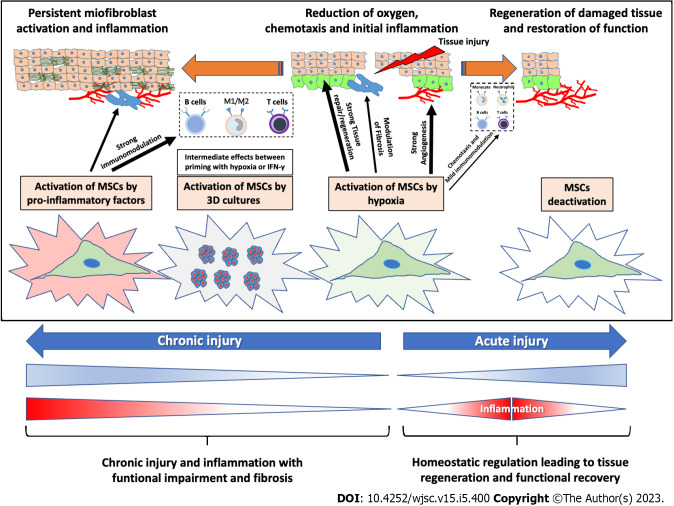Figure 3.
Schematic illustration of the physiological role and biological action of mesenchymal stromal/stem cells primed in vivo in a model of tissue injury and repair. During tissue injury and repair, mesenchymal stromal/stem cells (MSCs) are differently activated by various microenvironment stimuli to orchestrate tissue repair and functional recovery. First, naïve MSC activation (hypoxic activation) leads to the release of both angiogenic factors and chemokines, which stimulate the formation of new blood vessels, the recruitment of neutrophils, and the expression of adhesion molecules. Neutrophil action is followed by macrophage activity, which ensures sustained release of pro-inflammatory cytokines, and potentiation of the fibroproliferative response. If this process is not adequately regulated, a state of chronic inflammation occurs; the MSC phenotype is switched into an anti-inflammatory phenotype. MSCs: Mesenchymal stromal/stem cells; 3D: Three-dimensional.

